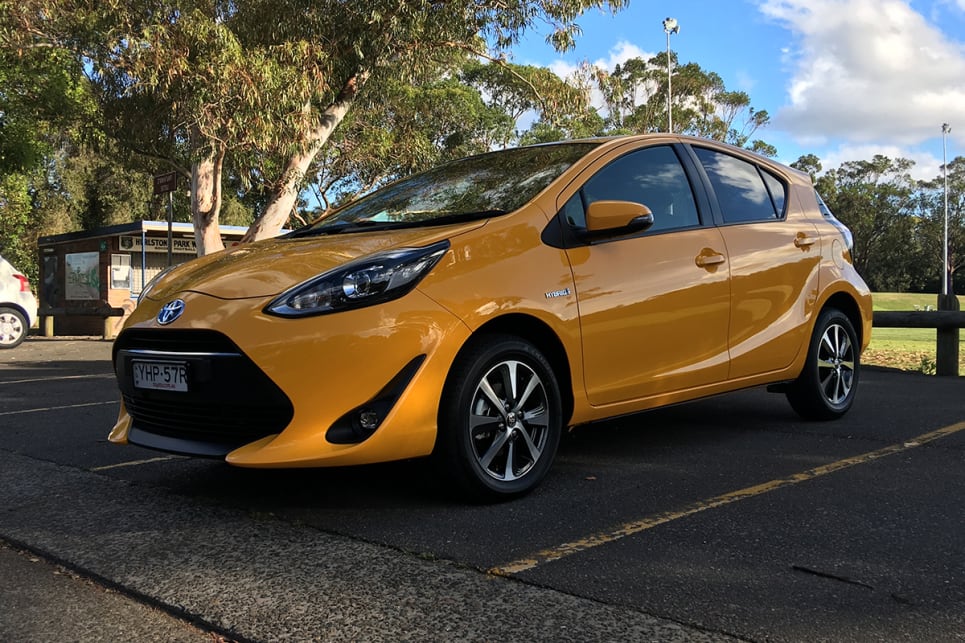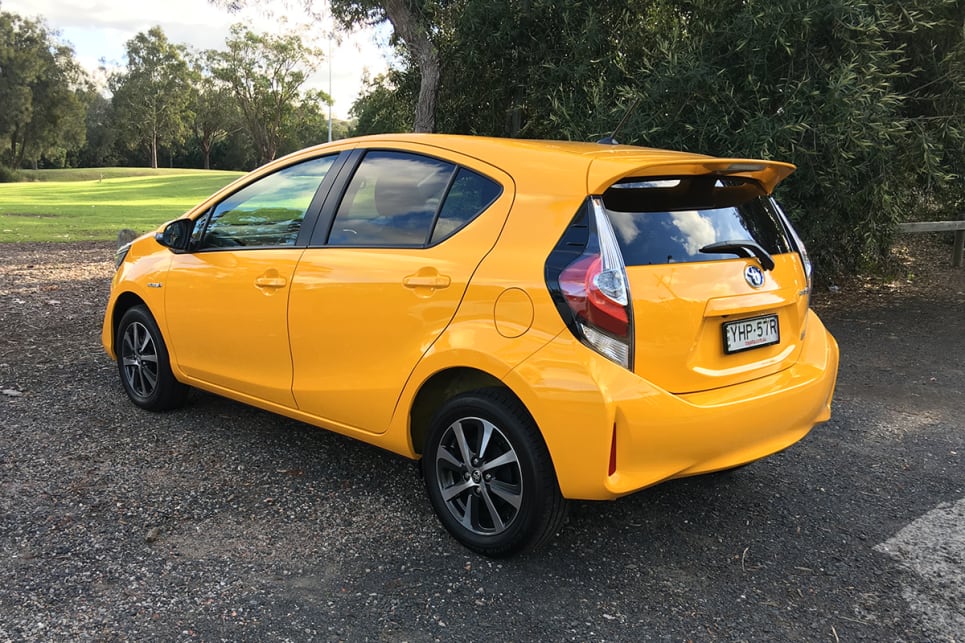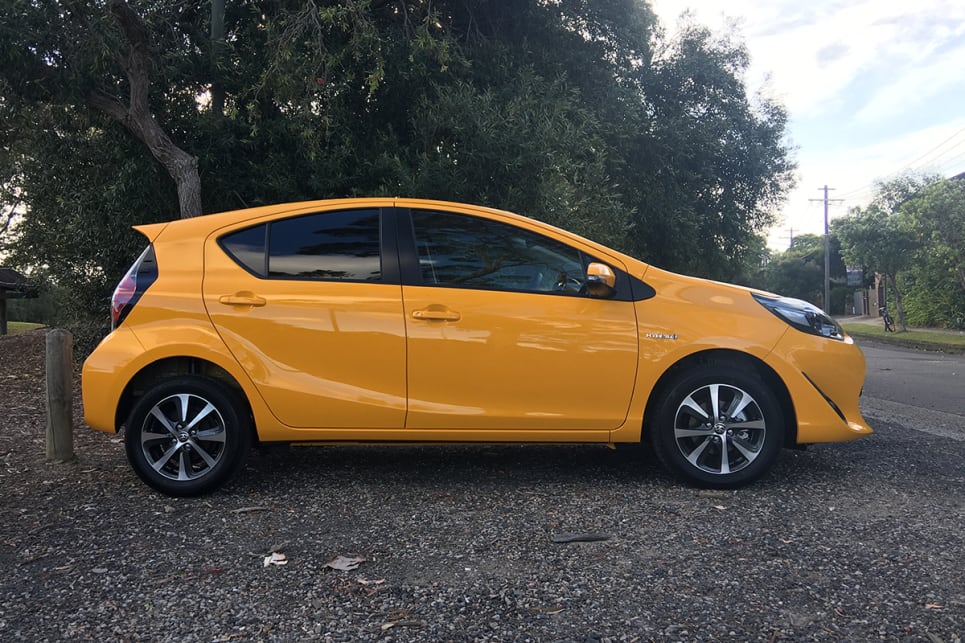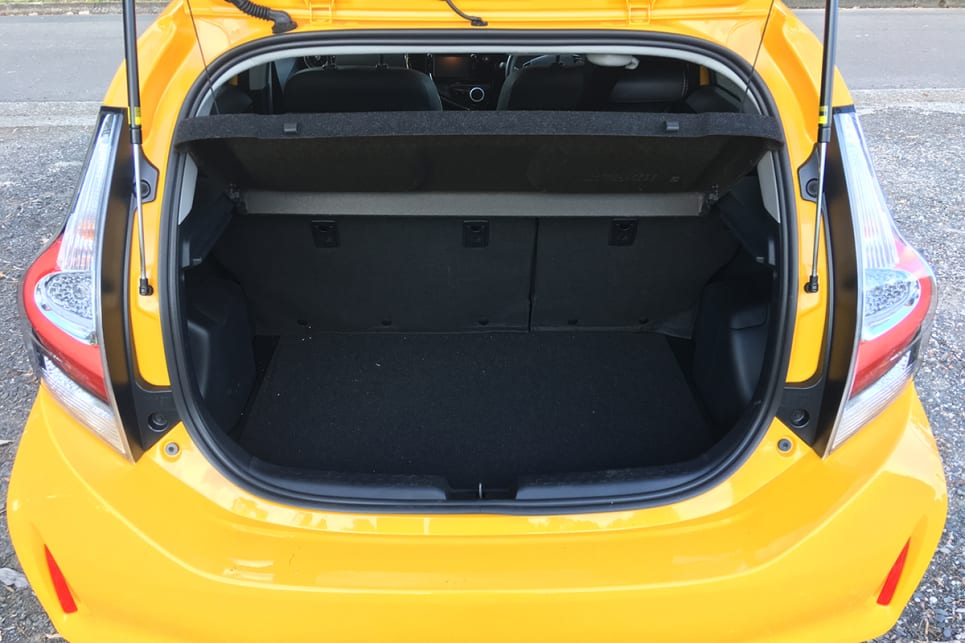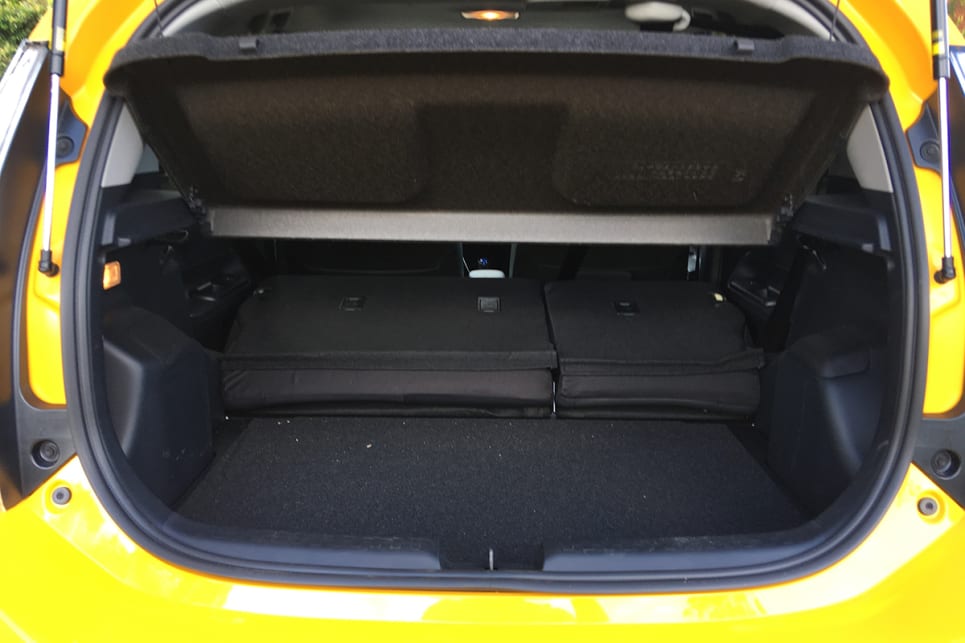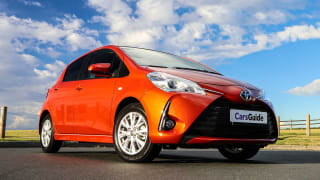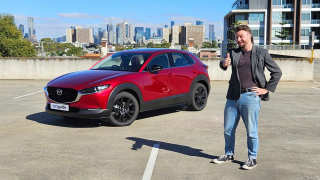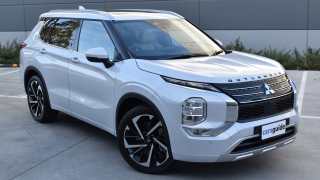The good news is that it doesn't look quite so quirky as the full-size Prius. The not-as-good news is that it's still no beauty-contest winner. Not helping matters was the fact our test vehicle was painted in a retina-burning yellow (they call it Hornet Yellow, and it's new for 2018) that looked almost nuclear.

Viewed front on, the blacked-out section of grille and bumper gives the littlest Prius a vaguely manta ray-shaped front-end, while the headlights climb both upwards and back into the body, lending a sense of sportiness to this very unsporty hybrid. From the back, the chunky bumper, vertical taillights and rear windscreen spoiler all add a little attitude to the design.
Inside, you'll find a small but premium-in-places space, with a gloss-black stereo surround that angles the main controls toward the driver, while the digital driver's binnacle is pushed toward the centre of the car, displaying speed, fuel and other key info above the stereo, rather than in front of the steering wheel.



